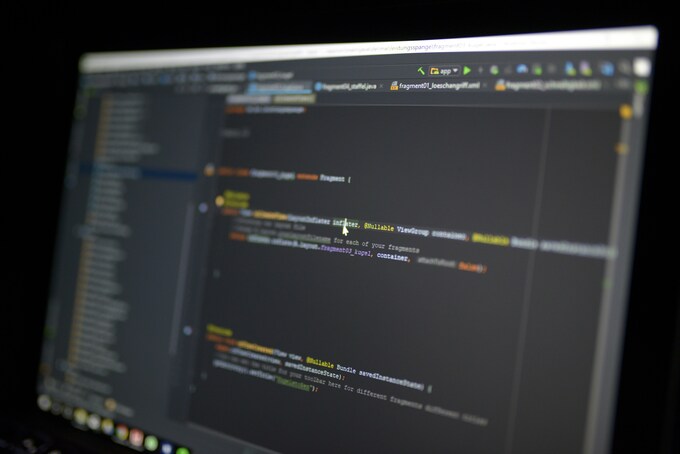
Are you looking to fortify the security of your Laravel applications? Dive into the world of integrating security testing tools with Laravel and safeguard your projects from potential threats. Let’s explore how you can enhance the protection of your applications while leveraging the power of Laravel’s robust framework.
Benefits of using Security Testing Tools with Laravel
Enhancing the security of your Laravel application is crucial in today’s digital landscape. By integrating security testing tools with Laravel, you can proactively identify and address vulnerabilities before they are exploited by malicious actors. This proactive approach helps in safeguarding sensitive data and maintaining the trust of your users.
Using security testing tools with Laravel also ensures compliance with industry standards and regulations, providing a strong foundation for your application’s overall security posture. Additionally, these tools offer automated scans that save time and resources while improving the efficiency of the development process.
Leveraging security testing tools enhances the reliability and stability of your Laravel application by detecting potential threats early on. This proactive stance not only protects your business reputation but also saves you from costly breaches that could result in financial losses and legal consequences.
Popular Security Testing Tools for Laravel
When it comes to securing your Laravel applications, there are several popular security testing tools available in the market. These tools help developers identify vulnerabilities and weaknesses in their code before they can be exploited by attackers.
One of the widely used security testing tools for Laravel is OWASP ZAP (Zed Attack Proxy). This tool helps in finding security vulnerabilities during the development phase by scanning for potential threats like SQL injection and cross-site scripting.
Another favorite among developers is Snyk, which not only scans for security issues but also provides actionable insights on how to fix them. It integrates seamlessly with Laravel projects, making it a valuable asset in maintaining application security.
Burp Suite is another powerful tool that offers advanced web application scanning capabilities. It can detect various types of vulnerabilities such as misconfigurations, session management issues, and more. Its user-friendly interface makes it easy to use even for beginners in security testing.
Step-by-Step Guide for Integrating Security Testing Tools with Laravel
When it comes to integrating security testing tools with Laravel, the process can seem daunting at first. However, by following a step-by-step guide, you can streamline the integration and ensure your Laravel application is secure.
Start by researching popular security testing tools that are compatible with Laravel. Choose one that fits your specific needs and requirements.
Next, install the chosen security testing tool into your Laravel project. Follow the installation instructions provided by the tool’s documentation carefully.
Configure the security testing tool settings according to your project’s specifications. This step is crucial in ensuring accurate and effective security tests are conducted.
Once everything is set up, run a test suite using the security testing tool to identify any vulnerabilities or weaknesses in your Laravel application.
Review the test results generated by the security testing tool and address any issues found promptly. Regularly running these tests will help maintain a high level of security for your Laravel application.
Best Practices for Combining Laravel and Security Testing
When combining Laravel with security testing, it is crucial to stay updated on the latest security vulnerabilities and best practices. Regularly monitor Laravel’s official documentation for any security-related updates or patches.
Utilize automated security testing tools like OWASP ZAP or Arachni to scan your Laravel application for common vulnerabilities such as SQL injection, cross-site scripting (XSS), and CSRF attacks. These tools can help identify potential weaknesses in your codebase before they are exploited by malicious actors.
Implement secure coding practices within your Laravel development workflow. This includes input validation, output encoding, and proper authentication mechanisms to safeguard sensitive data.
Regularly conduct penetration testing on your Laravel application to simulate real-world cyber-attacks and identify any potential entry points for hackers. This proactive approach can help strengthen the overall security posture of your application.
Stay informed about emerging cybersecurity threats and trends within the Laravel community. Engage with other developers through forums, conferences, and online communities to exchange knowledge and experiences related to securing Laravel applications.
Conclusion
Integrating security testing tools with Laravel is essential to ensure the safety and integrity of your web application. By incorporating these tools into your development process, you not only strengthen the security of your Laravel project but also build user trust and confidence.
Remember, security should never be an afterthought. It should be at the forefront of your development strategy from the very beginning. With a proactive approach to security testing using popular tools like OWASP ZAP, Snyk, and SonarQube, you can identify vulnerabilities early on and address them before they become major issues.
So, take the time to integrate security testing tools into your Laravel workflow and follow best practices to create robust and secure applications that protect both your users and your reputation in the digital world.